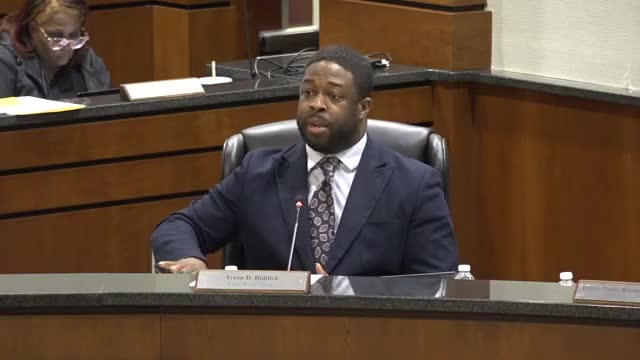Board members clash over school desegregation options
June 14, 2024 | SUFFOLK CITY PBLC SCHS, School Districts, Virginia

This article was created by AI summarizing key points discussed. AI makes mistakes, so for full details and context, please refer to the video of the full meeting. Please report any errors so we can fix them. Report an error »

During a recent government meeting, board members engaged in a heated discussion regarding compliance with a federal court order related to school desegregation. The meeting highlighted the complexities of balancing funding issues, community concerns, and the well-being of students.
One board member expressed dissatisfaction with the current options presented, stating, \"I can't support the options that's presented before me right now,\" and called for more alternatives to comply with the federal mandate. This sentiment was echoed by others who questioned whether the proposed decisions truly served the best interests of the children or merely aimed to avoid legal repercussions.
Concerns were raised about the perception of certain neighborhoods, particularly one referred to as \"Booger T,\" which some parents viewed unfavorably. A board member defended the area, emphasizing its positive attributes and the presence of retired educators, countering the stereotype that it is a crime-ridden neighborhood. \"It's not a bad neighborhood,\" they asserted, urging the community to reconsider its biases.
The discussion also touched on the need for further exploration of options before making a final decision. A motion was proposed to table the decision until the August work session, allowing time for staff to investigate alternative solutions. This approach was seen as a way to demonstrate to the Department of Justice that the board is actively seeking to address the situation rather than outright rejecting it.
Board members acknowledged the challenges posed by historical segregation and the need for thoughtful planning as new schools are built in developing areas. They expressed hope that as new communities emerge, the dynamics of school demographics would shift naturally, reducing the need for forced changes.
As the meeting concluded, the board emphasized the importance of collaboration and open dialogue in navigating the complexities of desegregation, with a commitment to prioritizing the needs of students and families in their decision-making process.
One board member expressed dissatisfaction with the current options presented, stating, \"I can't support the options that's presented before me right now,\" and called for more alternatives to comply with the federal mandate. This sentiment was echoed by others who questioned whether the proposed decisions truly served the best interests of the children or merely aimed to avoid legal repercussions.
Concerns were raised about the perception of certain neighborhoods, particularly one referred to as \"Booger T,\" which some parents viewed unfavorably. A board member defended the area, emphasizing its positive attributes and the presence of retired educators, countering the stereotype that it is a crime-ridden neighborhood. \"It's not a bad neighborhood,\" they asserted, urging the community to reconsider its biases.
The discussion also touched on the need for further exploration of options before making a final decision. A motion was proposed to table the decision until the August work session, allowing time for staff to investigate alternative solutions. This approach was seen as a way to demonstrate to the Department of Justice that the board is actively seeking to address the situation rather than outright rejecting it.
Board members acknowledged the challenges posed by historical segregation and the need for thoughtful planning as new schools are built in developing areas. They expressed hope that as new communities emerge, the dynamics of school demographics would shift naturally, reducing the need for forced changes.
As the meeting concluded, the board emphasized the importance of collaboration and open dialogue in navigating the complexities of desegregation, with a commitment to prioritizing the needs of students and families in their decision-making process.
View full meeting
This article is based on a recent meeting—watch the full video and explore the complete transcript for deeper insights into the discussion.
View full meeting
